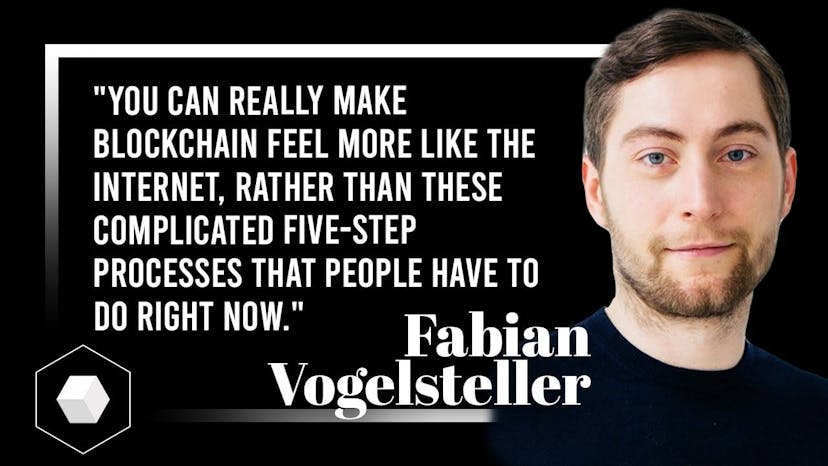Fabian Vogelsteller, father of the ERC20 Standard, on the Shift from Blockchain Addresses to Social Profiles with Lukso
Fabian Vogelsteller is a Blockchain veteran who was part of the Ethereum Foundation in its early days. From 2015 to 2018 he helped shape the Ethereum space, building an ETH Wallet and a web3 Browser, one of the first of their kind. He is the co-founder of the Lukso blockchain and together with Vitalik Buterin,…
By: Camila Russo • Loading...
Podcast
Fabian Vogelsteller is a Blockchain veteran who was part of the Ethereum Foundation in its early days. From 2015 to 2018 he helped shape the Ethereum space, building an ETH Wallet and a web3 Browser, one of the first of their kind. He is the co-founder of the Lukso blockchain and together with Vitalik Buterin, created the ERC 20 standards, a foundational building block for Ethereum. So what does Fabian hope to achieve with his new venture in Lukso and what brought him to this space?
Section 1: 0:03
- Part of the Ethereum foundation since the early years
- Shaped Ethereum space building ETH wallet & web3 browser
- Co-founded Lukso blockchain
- Co-created ERC-20 standards
Section 2: 9:32
The ERC20 token standard was officially recognised in 2017. The purpose was to set a replicable template for those who wanted to create and issue smart contracts on the Ethereum blockchain. Smart contracts can then be used to create smart property or tokenized assets. What existing problems did ERC20 solve? And what shape will it take in the future?
- ERC20 token standard recognised in 2017
- Introduction of smart contracts on the Ethereum blockchain
- Smart property and tokenized assent functionalities
Section 3: 29.38
The introduction of blockchain based profiles as opposed to accounts would be a seismic shift. Fabian believes this is an approach that would improve usability and protect user’s assets. What are the fundamental differences between a user account and a user profile, and what added functionality is available with a blockchain profile?
- Blockchain based profiles vs accounts
- Profiles could better protect user’s assets
- What are the added functionalities and can it heighten security?
Section 4: 57:25
The model of proof of stake, sharding and zero knowledge proof is supposed to enable a more scalable and decentralized blockchain ecosystem. It is a model built for the future of web3. How close are we to seeing this web3 model come to life? And how will it bring the space into the mainstream?
- Proof of stake, sharding and zero knowledge proof enable scalability
- Are these the features that will bring web3 into the future?
- Will it migrate web3 to the mainstream?
Advertisement
Get the best of The Defiant directly in your inbox 💌
Know what matters in Web3 with The Defiant Daily newsletter, every weekday
90k+ investors informed every day. Unsubscribe anytime.